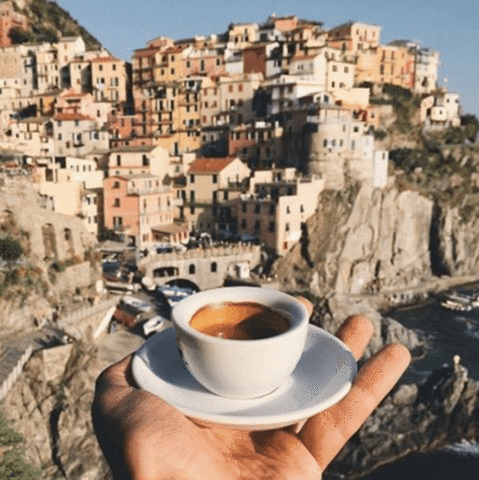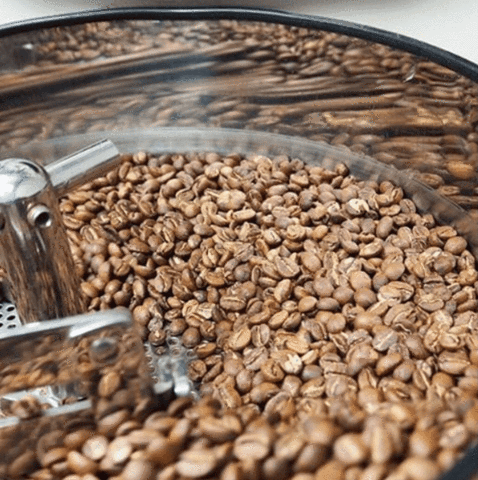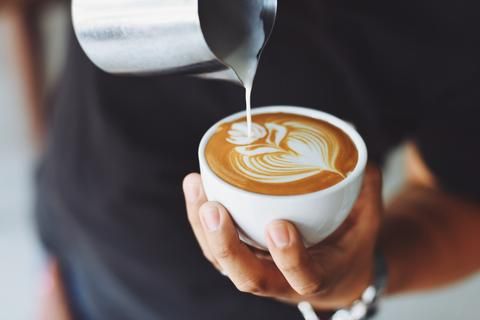

The Origins of Great Coffee
“Black as the devil, hot as hell, pure as an angel, sweet as love” - Charles Maurice de Talleyrand
Maybe it’s the complexity of coffee, as described by de Talleyrand, that explains its popularity and Melbourne’s love affair with it. This city’s addiction to not only coffee, but good coffee, has steadily grown and its reputation is percolating across the globe. History has always added to our layers of obsession with it.
Take a look at some of the best modern coffee shops around the world and chances are they were started by not only an Aussie, but a Melbournian at that. Cafes such as Bluestone Lane and Brunswick in New York; Flat White and Kaffeine in London; Common Man Coffee Roasters in Singapore and Pave in Milan are all influenced by the coffee style and cafe culture for which Melbourne is renowned.

Per capita, Australians don’t drink the most coffee in the world, not even close. We have Finland to thank for that. However, it seems it isn’t so much about quantity, but quality.
Early Days

The First Fleet
Coffee has played a significant part in the timeline of Melbourne’s historical moments. It was first brought to Australia along with the First Fleet in 1788 after a layover in Brazil. However, Melbourne during that time remained steeped in its English roots and the population favoured coffee over tea. You could argue that coffee’s rise to fame among the city was largely brought on by good timing.
Good As Gold
The Gold Rush of the 1850s and 60s brought an increased population that saw coffee street stalls pop up on city sidewalks and meant that both gold diggers and fat-cats could enjoy a caffeine hit. By the 1880s, the influx of wealth also made way for a construction boom of lavish, Victorian buildings. It was during this time that Melbourne also took part in a global movement towards the prohibition of alcohol.
This was the Temperance Movement, and it made way for Coffee Palaces to be built across the country. These were places where the offering was the same as a pub: hotel rooms, socialising, good food, coffee instead of alcohol.
We know now that Melbourne loves a froth as much as good brew and alcohol was eventually accepted back into society. Ironically, the Coffee Palaces of the day eventually began applying for liquor licenses and that was seemingly the end of that.
This time, however, Melbourne had developed a taste for coffee...
Migrant Movement

A Smooth Italian
World War II saw the movement of many European migrants who brought their style, language food and, of course, coffee to the streets of Melbourne. This was the 1950s, where stove-top coffee reigned at home. Institutions such as Mario’s, Pellegrini’s, the Sidewalk Cafe and The Galleon in St Kilda introduced the humble espresso that we love today.
Migrants set up shop around the inner northern suburbs of Collingwood, Carlton and Fitzroy. The espresso bars that opened revealed gilded bench tops, dark timber, terrazzo floors and pendant lights. The Gaggia espresso machine changed coffee the way the iPhone changed communication. The Gaggia could now make better use of the bean’s flavour by forcing more pressure through a tighter-packed coffee. This gave way to crema: the golden foam skimming the top of the humble short black.
Rise of the Roasters

Coffee culture continued to establish itself further throughout the 1980s and 1990s. Roasting heavyweight, Lavazza, saw Melbourne’s taste for quality coffee and chose to establish itself here long before setting eyes on the UK and US markets. Similarly, homegrown roasters such as Grinders and Genovese began to develop the local scene.
The 1990s saw a recession and government policy that worked on regenerating life back into the inner city establishments. This encouragement of a less formal dining scene coupled with Melbourne’s appreciation for a quality bean fostered a coffee culture that continued to boom. Many of the inner-city cafes could no longer afford the prime location and so good quality brews began to pop up in outer suburban areas.
A Modern Love Story

Perhaps the biggest give-away that this city is obsessed with coffee is the impressive rise and demise of Starbucks in Australia. Since its introduction in the late 2000s, the global coffee chain opened 84 stores throughout the country and closed 60 of them. It seemed that teeny-tiny espresso towered over venti orange mocha frappuccino after all.
There is evidence of Melbourne’s history with coffee woven through our current appreciation in many different ways. There are the hole-in-the-wall outlets such as Market Lane that pass your morning brew through the window. Specialty cafes such as Everyday Coffee and Patricia where the food is secondary and the coffee is the lead role. Batch brew is popping up in blue-collar cafes and our humble baristas are world-class competition winners.
On the steps of the GPO is Federal Coffee Palace, a reminder of the days of the Temperance Movement, while a few blocks up the street Pellegrini’s still serves scores of espressos a day. Grinders and Genovese still play a part, however the small independent roasts have driven an appreciation for bean and roast that’s influencing many palates across the city. Through them, we know that coffee is much more than caffeine. The same way that wine is much more than grapes. The origin of the bean, the heaviness of the roast, its filtration, the brewing process, the milk used and even the barista driving it make all the difference.
Whether you order an almond latte, a magic or a short black, what lies at the heart of Melbourne’s appreciation for coffee is that it allows people to connect, reflect, take a moment, work or dream over it. Our obsession with the brew is as sweet as love.
Article written by Isabella Ubaldi
Shop Now

